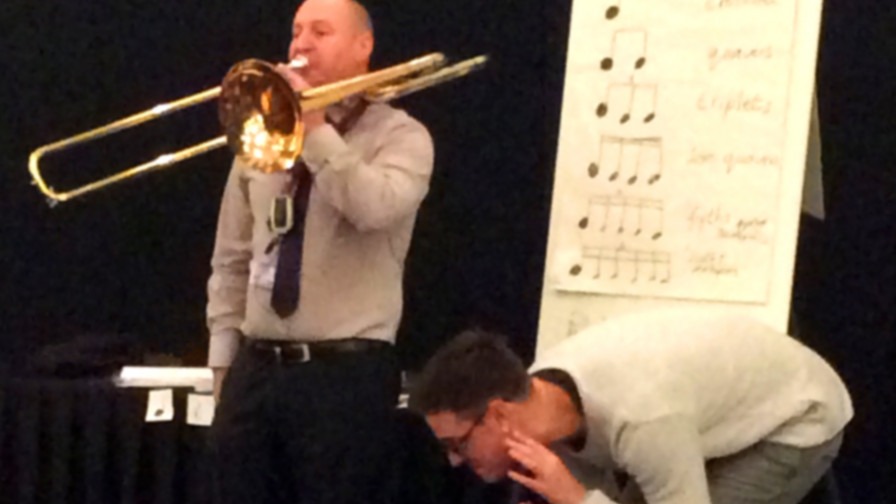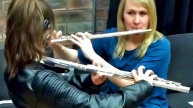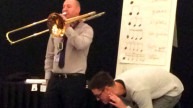Getting to the Heart of the Matter: Deaf Young People and Instrumental Learning
Yorkshire Youth & Music is making musical instruments accessible for deaf and hearing impaired (DHI) young people around the region. We know that DHI children can have as much benefit (and as much fun) from making music as any other child – we just needed to learn how to help them learn. And so our Deaf Young People and Instrumental Learning project was born. In a nutshell, the project consists of four key elements:
- - practical demonstrations and basic music theory workshops led by professional, deaf musicians – introducing deaf young people to appropriate musical role models
- - a chance for the young people attending these workshops to try out a selection of instruments
- - ongoing music lessons with the children's local music hub lead organisations (mostly local music services)
- - and, perhaps most crucially, training for music teachers working for hub leads, giving them tools and confidence to engage with and teach deaf children
These elements combine to contribute to our main goal: making DHI young people’s instrumental learning part of the mainstream through tutors who know how to engage with DHI young people effectively, and through DHI young people becoming role models for their younger peers.
We all know that when funding for a project runs out, it is difficult to maintain activity. Where it is possible (and it isn’t always), we design our work so that it can be continued indefinitely. For DHI young people learning musical instruments, this means removing the barriers that prevent access. Deaf professional musicians are vital to show young people what can be achieved, and choices about which instrument to play are more important than for hearing children (DHI people need to choose instruments that suit their hearing). Inclusive provision – learning and playing alongside hearing peers is also vital. In our Musician’s Corner for January 2019, you can see how Sean Chandler’s own experiences contributed to his development into a professional player.
Through our projects we have seen that DHI young people learn some aspects of music (for example, understanding notation) more quickly than their hearing peers when they’re supported by instrumental tutors who can adapt their practice to meet these young people’s needs.
In the longer term, DHI young people may well have to pay for instrumental lessons in just the same way as other children do, which means that parents and carers have also to see the educational and social benefits of instrumental playing. YY&M continues to roll out the project in partnership with hubs across the Yorkshire region – and we would love more hearing impaired children and young people across the UK to benefit from learning an instrument. Please visit our Deaf Young People and Instrumental Learning page or contact Gail at Yorkshire Youth & Music to find out more.





